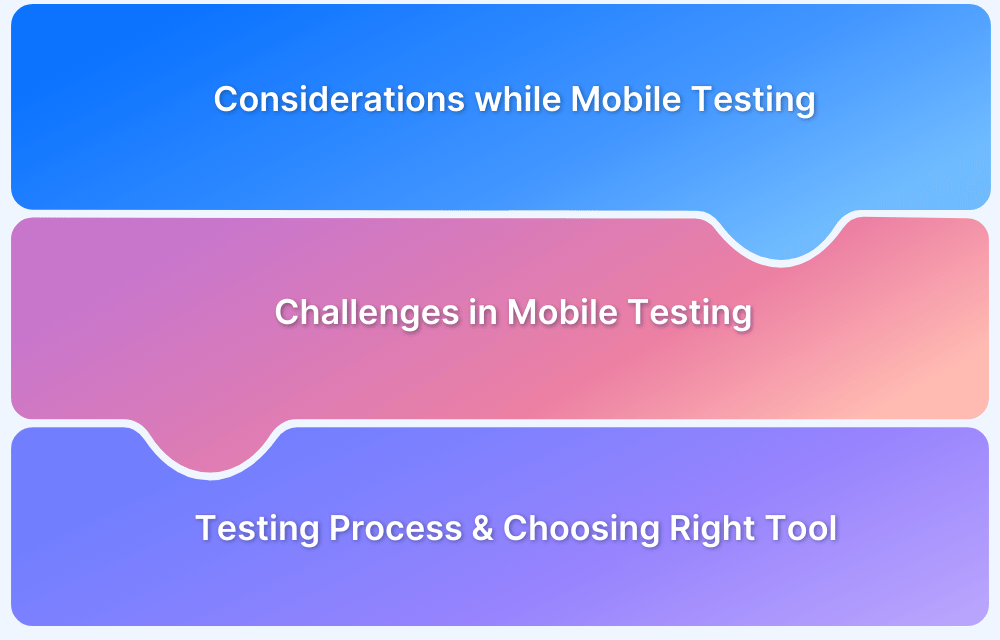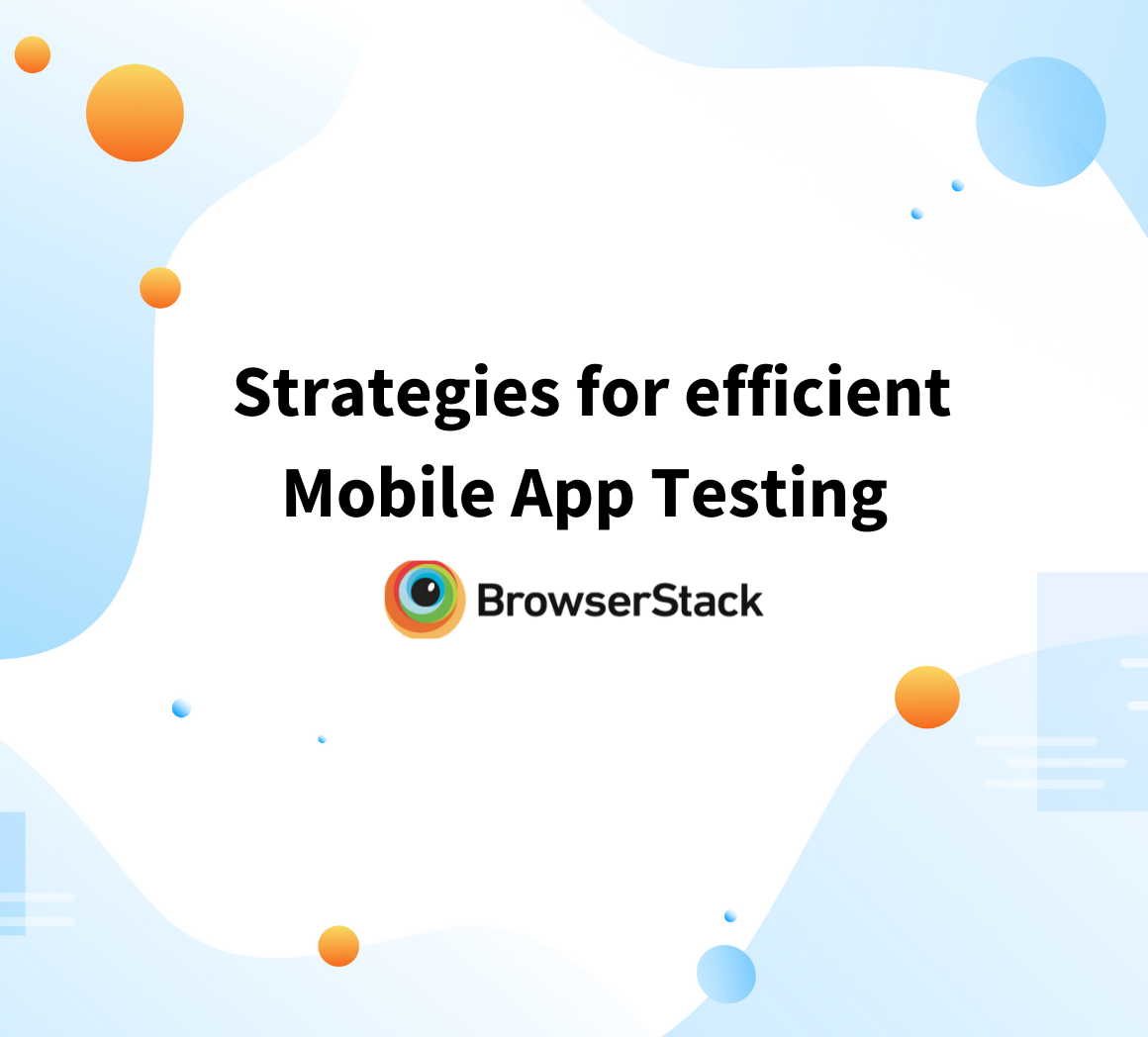How to implement the right Mobile Testing Solution?
By Tom Collins, Community Contributor - June 16, 2023
Mobile testing is integral to mobile development as most users research and browse on their mobile devices. Hence, mobile testing or mobile application testing becomes inevitable in the ever-evolving market of highly essential technologies.
This post offers insight into choosing the right mobile testing solution and showcases how to set up a comprehensive mobile testing environment. Read on to learn about the strategies for implementing mobile testing.
Importance of Mobile Testing
If an app is poorly designed, the users will uninstall it and leave negative reviews/ratings, which hurt the app’s reputation and, subsequently, the company’s. The result could be a high uninstallation and poor conversion rates, hurting your company’s overall revenue.
Accurate mobile testing ensures users can handle the app’s functionality and interface (UI). Mobile app testing validates apps’ appearance, performance, and functionality across multiple devices under real user conditions.
Vital Strategies for Mobile Testing
Determining the Prerequisites
The first step is to prepare a comprehensive enterprise testing strategy to determine the end goals and metrics. It is essential, as all the other steps depend on it. This step includes several activities, including determining prerequisites, identifying the targeted testing devices, figuring out the app type, market share, and more.
QA team goals are divided into test design, automation, asset delivery management, etc., for steady execution.
Identification of Testing Types
As the end-users have different mobile devices, it is crucial to ensure that the application performs well on all top Android devices and iOS devices.
To verify this, different types of testing, which is usually a combination of manual, automated, parallel, or regression testing, are deployed. This helps identify all the potential defects and efficiently meet the application’s objective.
Designing Test Scripts and Test Cases
A test case refers to the succession of steps that helps in executing a particular application test. Test scripts and test cases are pretty similar. While test cases are used during manual testing, test scripts are used in automation testing.
Also Read: Test Case Vs Test Script
Setup of Testing Environment
Arranging the codes, devices, and proper installation of the required software to perform mobile app testing is known as a testing environment. The test environment is dependent on the mobile app being tested. Setting up the right test environment is vital to ensure the optimum success of mobile app testing.
Manual Testing and Automated Testing
Mobile automation testing includes executing automated test cases on different mobile devices. Companies must choose a steady mix of manual testing for one-off cases and automated testing with frameworks such as Appium, Calabash, or XCUITest based on their app environment.
Types of Mobile Testing Solutions
Remote Testing: This is done from an external location outside an organization’s network system. Although it’s cost-effective, there are certain challenges of remote testing, such as poor screen resolution, limited debugging ability, and a higher risk of security loss.
On-Premise Testing: This is a local version of the mobile testing solution installed on servers inside your company network system. The advantages include faster and more accurate results. However, it can be less secure as compared to remote testing. Small and startup companies depend upon On-Premise testing.
Solution: Overcoming Challenges of Local Testing
Cloud Testing: This is a local version of mobile testing solution, accessible over the internet. It offers fast results and many benefits, such as lower cost, better customer service, mobile managed service, and easy deployment. And it’s also very secure, as your QA can access real devices and OS on the cloud without worrying about device lab maintenance.
Read More: What is Cloud Testing?
What to Test in Mobile Apps?
Screen Dimensions and Specifications
Screen size is a prime component of mobile testing because sometimes it contains bugs affecting the app’s layout. Also, wrong dimensions invert, losing significant parts of UI and side by side deteriorating the UX simultaneously. So, it’s necessary to consider versatile dimensions specifications for mobile screen testing.
User Experience
Good UI testing includes a correct layout for elements like buttons, images, headings, text fields, icons, etc. The overall look and feel of the UI, like font, alignment, and display type, should be tested per the company requirements.
- For the initial stages, one can even consider Mobile UI mockup tools, which make it easy for designers to showcase their applications and give an idea of what they want to build.
- You want to ensure your site or application is mobile-friendly and responsive and doesn’t slow down based on the device you are testing.
- Performing a UX design test is essential for mobile devices.
So, reviewing these areas of user experience is vital while testing a mobile application. Also, some key points should be checked for UX testing. They are – easy navigation, seamless and fast transactions, fast order placements, plenty of access to product information, etc.
Performance on Real Devices
You want to ensure your tests are running on real devices and browsers to get a true feel of the user experience in real user conditions such as throttled networks, low battery status, push notifications, etc. Even if your app looks the same on both a desktop and a phone, it may behave differently. Therefore, it is vital to test in different browsers as well.
Optimize it
The last thing to do is to optimize the application as per the results of extensive testing. This will enable you to fine-tune the mobile app and eliminate all the hiccups it had earlier.
Implementing the right Mobile Testing Solution
No need to worry about implementing any solution when BrowserStack works straight out of the box. The mobile device-OS diversity and defragmentation issue are solved as the testing infrastructure offer cloud-based solutions for manual, automation, parallel, visual, responsive, and speed testing.
Simply sign up and takes the complexities out of testing mobile apps.
Wrapping Up,
Manual mobile testing with BrowserStack is an industry-leading solution with testing experiences through App Live. Whereas, with App Automate, rapid iteration cycles and quality assurance are delivered with automated testing capabilities.
- App Live: a manual app testing solution that gives access to real devices-browser-OS combinations for accurate testing. Testers can use real-time debugging, analyze crash reports and logs, and examine UI elements. Leverage 15+ native device features like GPS, network simulation, and localization to replicate real user conditions.
- App Automate: an automated app testing solution that enables your QA teams to test native and hybrid mobile applications using automation frameworks such as Appium, Espresso, XCUITest, or Flutter. Also, ship faster and reduce build times by more than 10x through parallel test execution on BrowserStack cloud
Implementing the right solution for mobile testing is as important as its development. With the right plan, you can develop and deliver an application that offers a great user experience.



